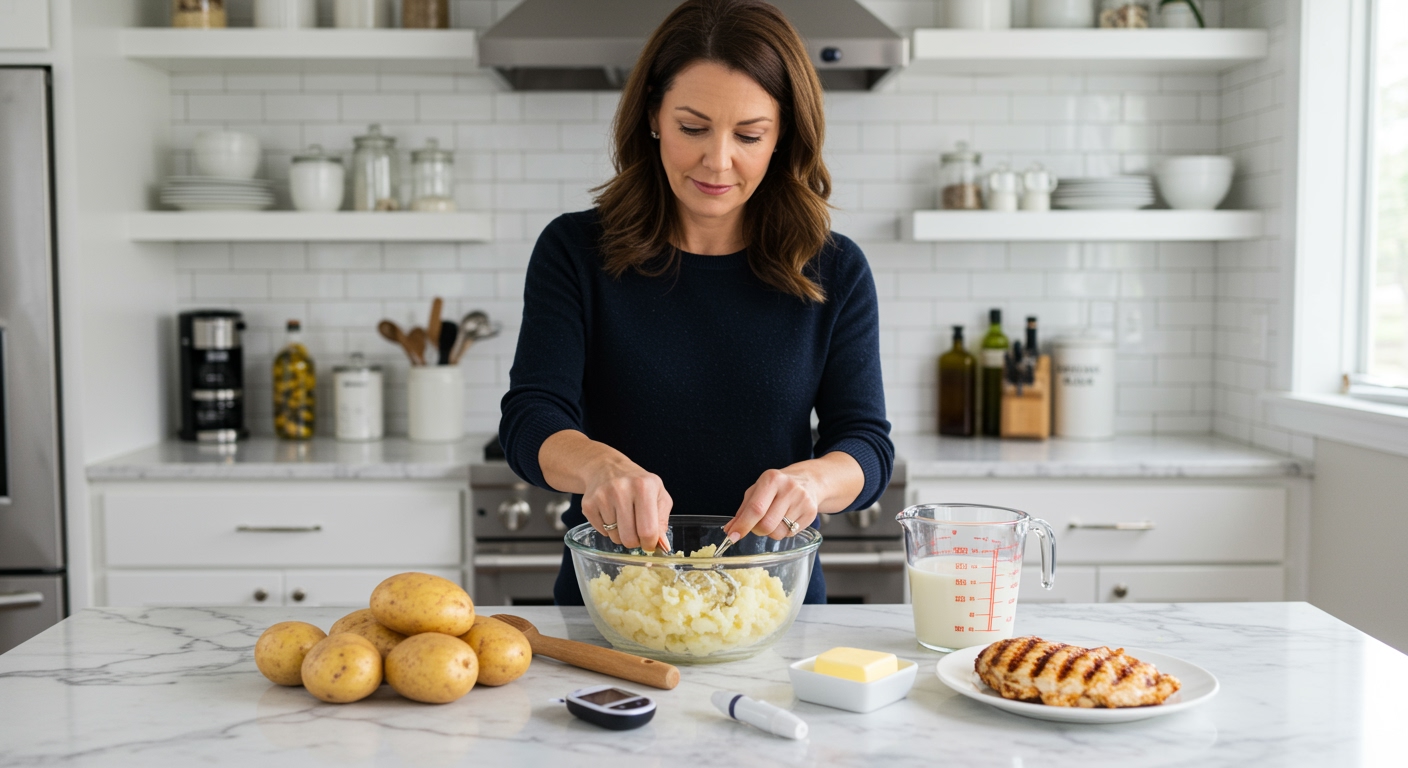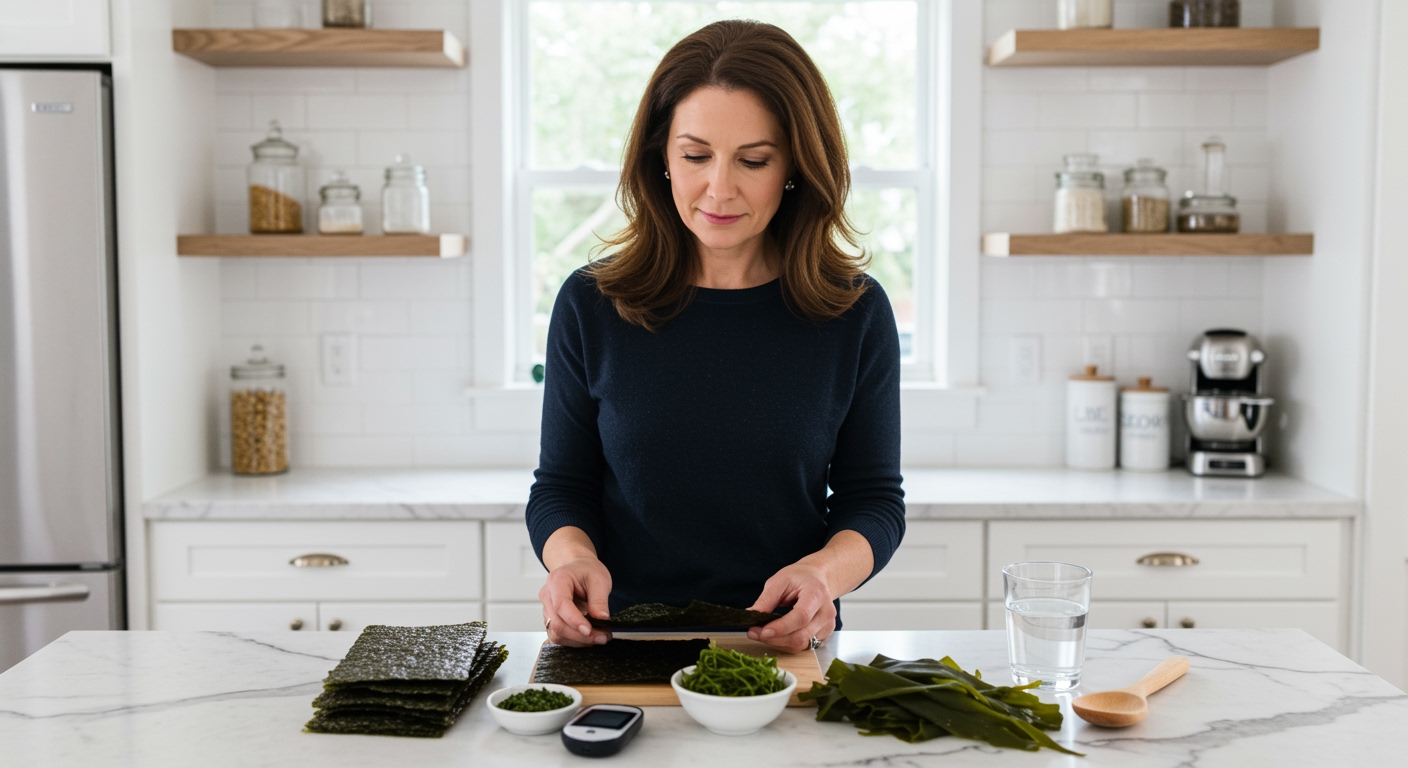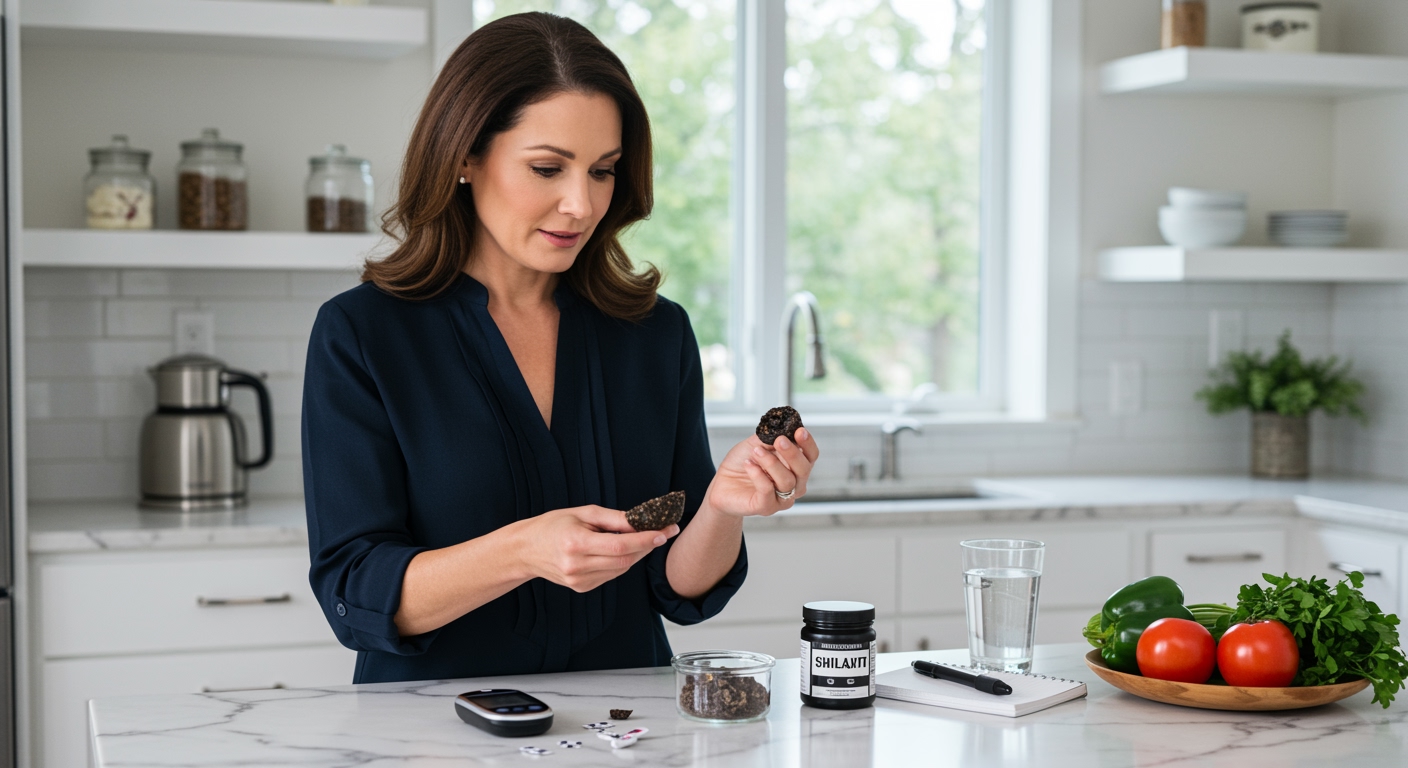✪ Key Takeaway: Mashed potatoes can spike blood sugar quickly, but portion control and smart preparation make them manageable for diabetes.
Introduction
Your grandmother’s creamy mashed potatoes might be sabotaging your blood sugar without you knowing it.
You probably wonder if this beloved comfort food fits into your diabetes meal plan because potatoes have earned a confusing reputation in the nutrition world.
Hi, I’m Abdur, your nutrition coach and today I’m going to explain exactly how mashed potatoes affect your blood sugar and share practical strategies to enjoy them safely with diabetes.
How Do Mashed Potatoes Affect Blood Sugar Levels?
Mashed potatoes have a glycemic index of 87, which puts them in the high category for blood sugar impact.
This means your body converts the starches in mashed potatoes into glucose very quickly after eating them.
The mashing process breaks down the potato’s cellular structure, making the starches even more accessible to your digestive enzymes.
When you eat mashed potatoes, your blood sugar typically peaks within 30 to 60 minutes.
A half-cup serving of mashed potatoes contains about 15 grams of carbohydrates, which equals one carbohydrate exchange in diabetes meal planning.
The addition of butter, milk, or cream increases the calorie content but may slightly slow down the absorption rate due to added fats.
✪ Fact: Mashed potatoes rank higher on the glycemic index than white bread and most breakfast cereals.
What Makes Mashed Potatoes Different From Other Potato Preparations?
The preparation method dramatically changes how potatoes affect your blood sugar compared to other cooking styles.
Boiled whole potatoes have a glycemic index of 78, while baked potatoes score 85, making mashed potatoes the highest at 87.
The mechanical breakdown during mashing exposes more starch surface area to digestive enzymes.
Cold potatoes contain more resistant starch, which acts like fiber and causes smaller blood sugar spikes.
Potato salad made with cooled potatoes has a glycemic index of only 62 because of this resistant starch formation.
Adding acidic ingredients like vinegar or lemon juice to mashed potatoes can help slow down starch digestion.
The texture and temperature of mashed potatoes make them easier to eat quickly, leading to larger portions and faster consumption.
✪ Pro Tip: Let your mashed potatoes cool slightly before eating to form some resistant starch and reduce blood sugar impact.
Can You Make Mashed Potatoes More Diabetes-Friendly?
You can significantly improve the blood sugar impact of mashed potatoes with smart ingredient swaps and preparation techniques.
Replace half the potatoes with cauliflower to cut carbohydrates by 50% while maintaining the creamy texture.
Use Greek yogurt instead of butter and milk to add protein, which helps slow glucose absorption.
Adding a tablespoon of olive oil provides healthy fats that can help moderate the glycemic response.
Leave the potato skins on when mashing to increase fiber content, which slows down digestion.
Season with herbs and spices like garlic, rosemary, or thyme instead of salt to enhance flavor without affecting blood sugar.
Consider using smaller, waxy potatoes like red or fingerling varieties, which have slightly lower starch content than russets.
✪ Note: Even with modifications, portion control remains the most important factor for blood sugar management.
What Should Be Your Portion Size And Timing Strategy?
A safe portion size for mashed potatoes with diabetes is typically one-half to three-quarters cup per meal.
This portion contains approximately 15-22 grams of carbohydrates, fitting within most diabetes meal plans.
Eat mashed potatoes as part of a balanced meal that includes lean protein and non-starchy vegetables.
The protein and fiber from other foods help slow down the absorption rate of the potato starches.
Time your mashed potato consumption when you can be most active afterward, such as lunch rather than dinner.
Physical activity within 30 minutes after eating can help your muscles use the glucose more effectively.
Monitor your blood sugar 2 hours after eating to understand how your body responds to different portion sizes.
✪ Pro Tip: Use a measuring cup initially to train your eye for proper portion sizes rather than estimating.
Are There Better Alternatives To Traditional Mashed Potatoes?
Several lower-carbohydrate alternatives can satisfy your craving for creamy, comfort food textures.
Mashed cauliflower contains only 5 grams of carbohydrates per cup compared to 35 grams in mashed potatoes.
Turnip mash provides a similar texture with 8 grams of carbohydrates per cup and a slightly sweet flavor.
Mashed parsnips offer natural sweetness with 24 grams of carbohydrates per cup, still lower than potatoes.
A combination of mashed vegetables like cauliflower, turnips, and a small amount of potato creates variety.
Shirataki root-based alternatives provide extremely low carbohydrate options, though the texture differs significantly.
You can gradually transition by starting with 75% potato and 25% cauliflower, then adjusting the ratio over time.
✪ Fact: Mashed cauliflower with cream cheese and butter can taste remarkably similar to traditional mashed potatoes.
The Bottom Line
Mashed potatoes can be part of your diabetes meal plan when you understand portion control and preparation methods.
Food is meant to be enjoyed, not feared, but knowledge gives you the power to make choices that support your health goals.
I would love to hear about your experience with mashed potatoes and diabetes management, so please share your questions, tips, or feedback in the comments below.
References
At NutritionCrown, we use quality and credible sources to ensure our content is accurate and trustworthy. Below are the sources referenced in creating this article:
- January AI: Mashed Potatoes Glycemic Index
- HealthMatch: Potatoes and Diabetes Type 2
- Livestrong: Mashed Potatoes on a Diabetic Diet
- WebMD: Carbs Potatoes Blood Sugar
- Harvard School of Public Health: Potatoes May Increase Risk of Type 2 Diabetes





